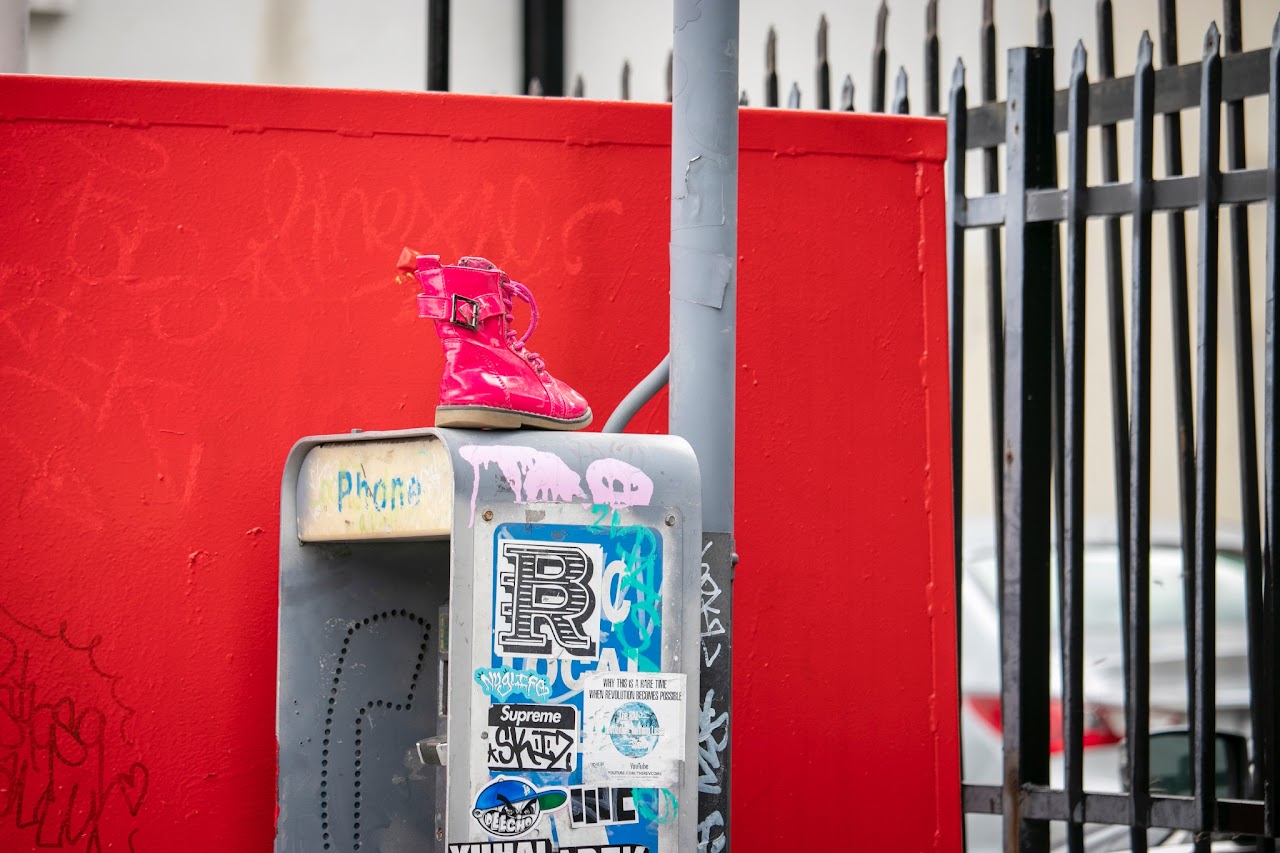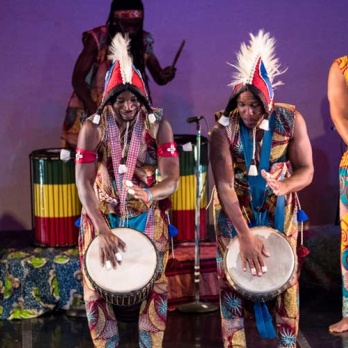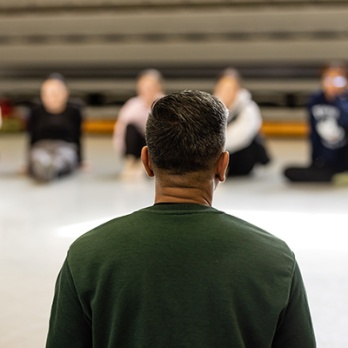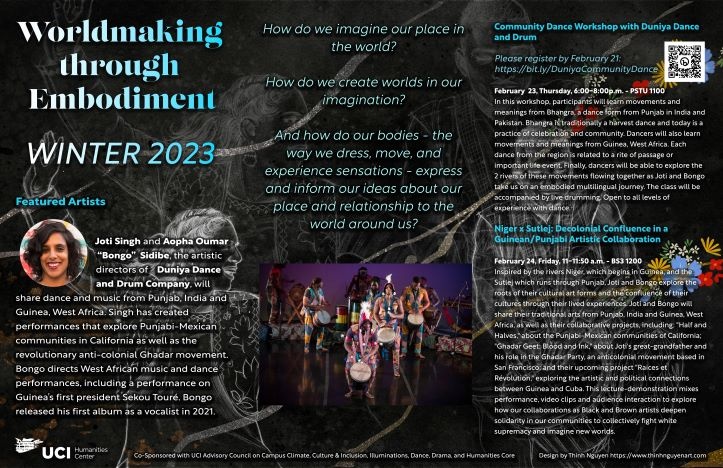
How do we imagine our place in the world?
How do we create worlds in our imagination?
And how do our bodies - the way we dress, move, and experience sensations - express and inform our ideas about our place and relationship to the world around us?
These are the questions that the Humanities Center explored during the 2022-2023 academic year.
Inspired by the new “Worldbuilding” theme of UCI Humanities Core and a revived collaboration with faculty in the Claire Trevor School of the Arts, the UCI Humanities Center will be co-hosting a yearlong dance festival, entitled “Cultural Resonance in Contemporary Bodies: Worldmaking through Dance.”
Worldmaking, here, gestures to Nelson Goodman’s concept that worlds are not given, but are made, as well as to the vision sketched by performance theorist José Esteban Muñoz, of performance as mapping other worlds—worlds of futurity, of belonging, and of self-expression available to those who too frequently are denied their full subjectivity. Worldmaking performances initiate both the performers and the audience into a sense of alternative possibilities—and suggest that these need not be only utopian, or far off in the future, but can be performed into existence, in the here and now.
The festival emphasized dance as a force of worldmaking, to insist on the material corporeal effects of performance: worlds cannot be made apart from the bodies that inhabit them. Here, dance is a form of mobilization, of knowledge production, and of history making.
Though worldmaking can envision and enact new social and personal possibilities, it can just as easily be hegemonic, a force wielded to maintain oppressive structures of power. Worldmaking then, even in its reparative dimensions, is always tied to the embodied conditions by which we know our present world.
Worldmaking Through Embodiment Featured in New University, read the article in UCI's campus newspaper.
During spring 2023, students and staff at UCI have been exploring Asian American identity through photography. Scapegoated for racial, public health, economic, and political reasons, what does it mean to be Asian American in a time of hate? Along with an exhibition in the Humanities Center lobby, the participants designed a virtual exhibition.
This project has been guided by the mentorship of award-winning photojournalist Mark Leong (http://www.markleongphotography.com/) and UCSD doctoral student and UCI alum Phuc To with support from Professor Judy Tzu-Chun Wu, the Center for Liberation, Anti-Racism, and Belonging, the South Coast Chinese Cultural Center, and the Humanities Center.
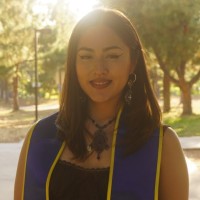
Jazmin Serrano Martinez worked with Professor Judy Wu, Humanities Center director, on the year-long project DREAM Fellow project. Jazmin was a UCI 3rd year undergraduate student, now an alumna with a bachelor's degree in Education Sciences. She was drawn to the project site of Worldmaking through Embodiment because it delves into the artistic realm while also holding critical conversations surrounding identity, race, our embodied conditions, and the power structures that mold the spaces we inhabit."
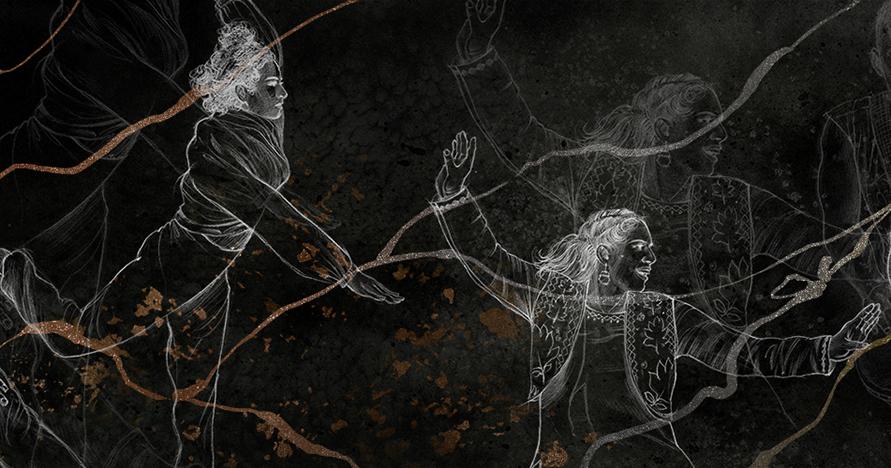
The phrase "Worldmaking through Embodiment" draws parallel themes to kintsugi ("golden joinery") and the performative power of dance. In kintsugi, shattered ceramic pieces are mended together by the adherence of lacquer and dusted with the grandeur of gold. The lacquer highlights the reparative history and the imperfect, boundless beauty that exists—and simultaneously creating a new epistemic horizon for new possibilities, new landscapes, and new worlds to emerge. With dance, emotive movements and expressive gestures garner a resounding sense of evocation, juxtaposed by the impermanence of humanity. Through these collective actions, dance reveals secrets, stories, and sentiments—inspiring others to embody their own narratives and past. Together, the tenable beauty of imperfections and the culmination of expressive dance help manifest an anchor for the audience to create new world in their own eyes—one overflowing with possibilities. https://www.thinhnguyenart.com/

